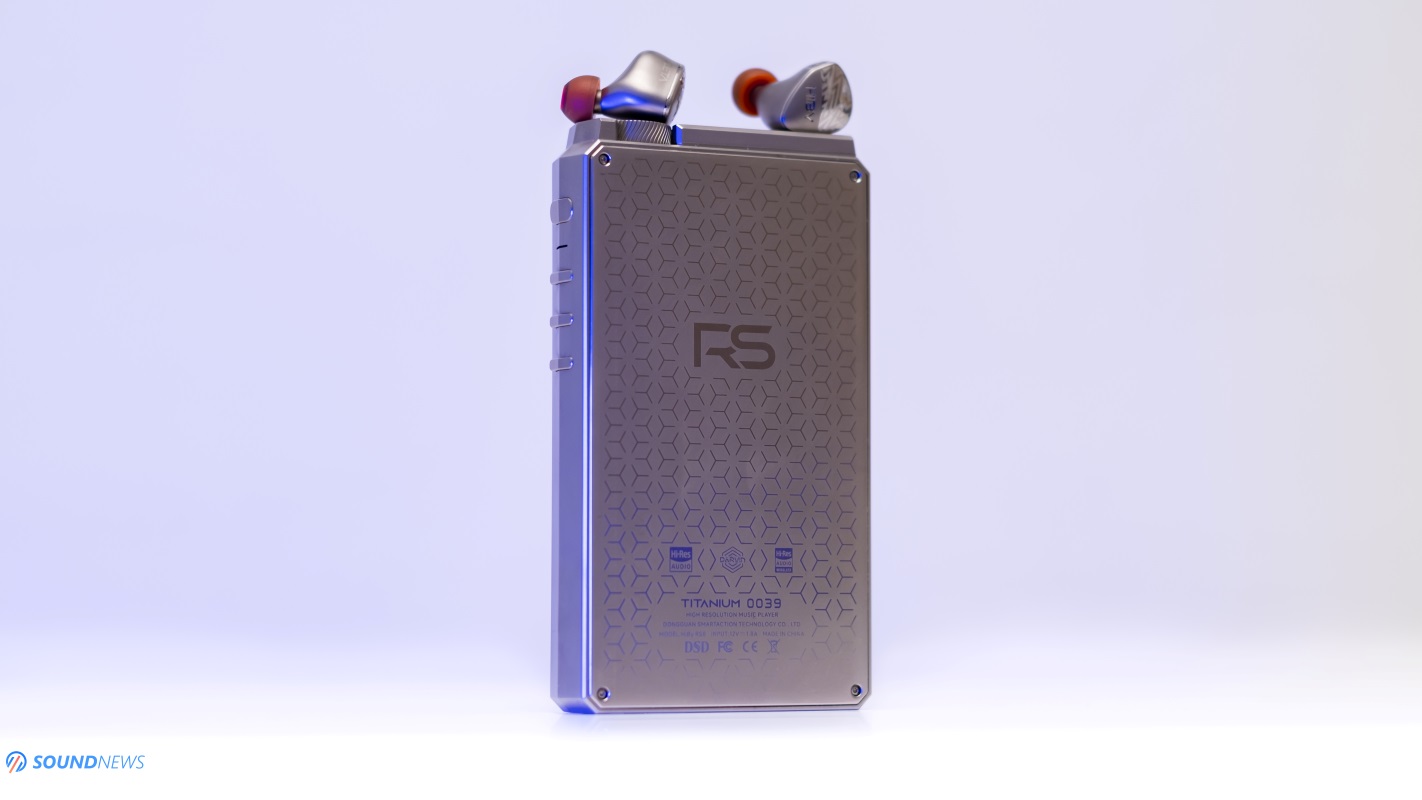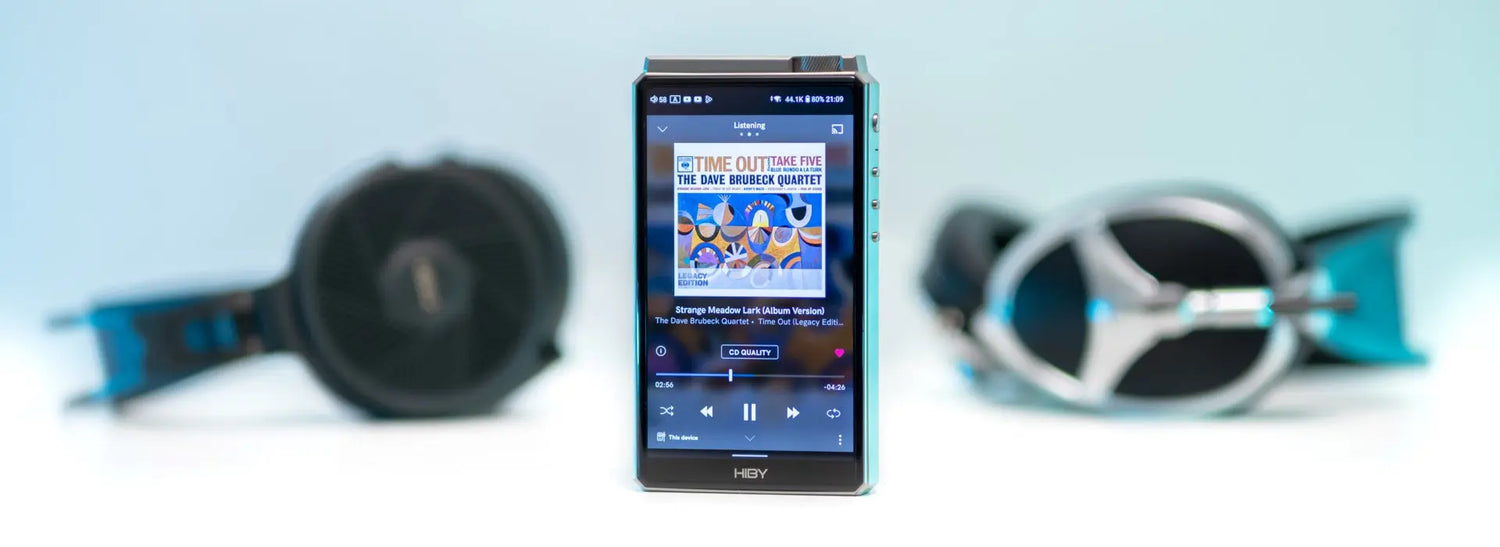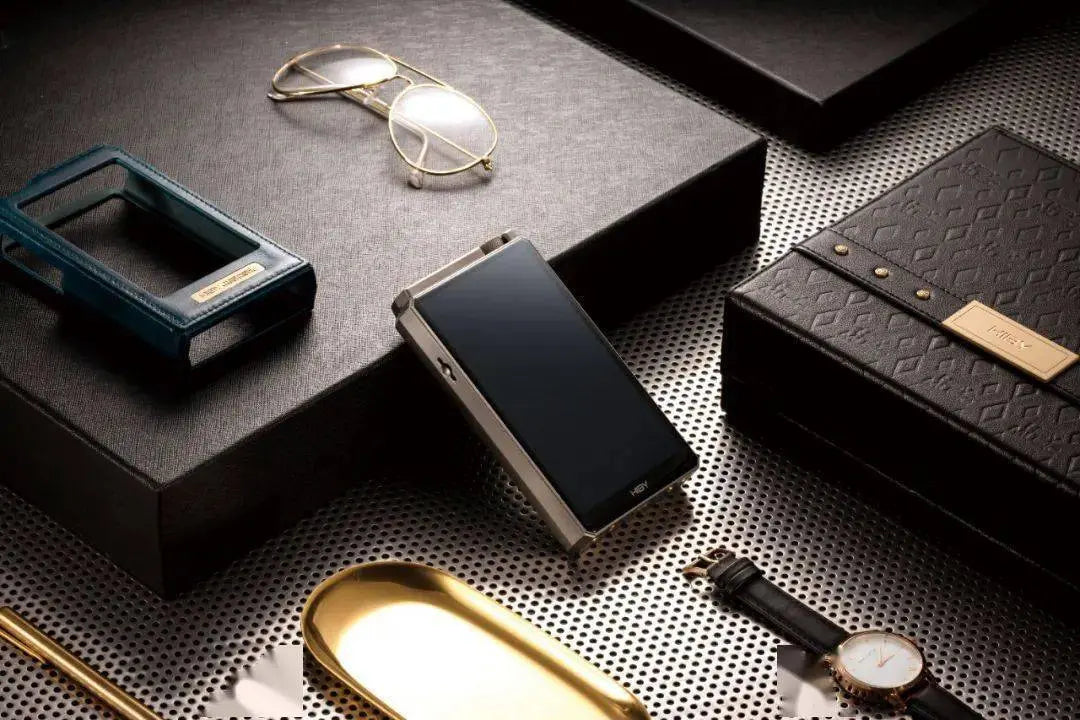Dreams of a distant future often stir my thoughts and as we embark on the year 2024, even the most optimistic among us can sense the winds of change sweeping across the world. In some of my dreams, I find myself transported to an imaginary realm, where I transform into a conjurer, bending the world to my will, gradually building an empire with the boundless power of imagination. A bright individual once proclaimed that Imagination is more important than knowledge, and I tend to agree; without it, we would remain mere beasts, incapable of aspiring to something greater than ourselves.
In one such dream, a benevolent goddess guides me to Elysium, granting me the privilege of selecting a single object from the mortal realm that can cross the ethereal divide. Suddenly, a kaleidoscope of portable music players materializes before my eyes – cassette players in vibrant hues, Discmans in a myriad of shapes, and digital audio players in countless numbers. “Seize the one dearest to you!” she whispers throughout the dreamscape.
From the vast collection of tapes, countless CDs, and a sea of aluminum casings, I pluck the dearest of them all – the HiBy RS8 portable digital audio player, my faithful companion for the past eight months. If you’re wondering what are some of my trusted companions on long journeys. It was always a pen, a multitool, a flashlight, a digital player, a pair of in-ear monitors, and another pair of closed-back desktop headphones.
Why the RS8 you might ask? A seemingly simple question with an intricate answer. My current favorite DAC is an extravagant R2R ladder DAC, while my preferred solid-state headphone amplifiers were always fully discrete Class-A ones that weren’t switching to Class-B operation. When these exceptional designs seamlessly collaborate to reproduce music, the experience transcends the realm of amplified analog signals, transforming into a live recording resurrected from the past, unfolding before my ears in the present tense.
We have had the privilege of testing a plethora of digital audio players, including flagship creations from FiiO, Shanling, and HiBy. While some of these players have been truly extraordinary, none have matched the sonics produced by HiBy’s RS8. Combining a ladder of resistors governed by a potent FPGA, a switchable Class-AB/Class-A headphone amplifier section crafted from discrete components feels akin to miniaturizing my beloved Rockna Wavedream Signature DAC and Enleum AMP-23R into a compact, pocket-sized device capable of delivering an equally captivating listening experience.
HiBy boasts over two decades of experience in the portable audio domain, and with the RS8, they have unleashed their imagination, forging a DAP like no other, solidifying their position as pioneers in the realm of R2R and FPGA technology within portable devices. We previously dabbled our toes in the R2R ladder pool with their RS6 DAP, infused with a custom-designed Darwin architecture that offered a plethora of tuning options. However, the RS8 is a scarier beast, armed with better specs altogether, higher performance SoC, full MQA decoding, adjustable FIR filters, OS/NOS modes, numerous plugins, and an array of additional sound enhancements. The RS8 is not your average off-the-shelf DAP and as the pinnacle of portable audio, it demands a hefty price tag, retailing at a staggering $3.299. Now, the question arises: is it worth the premium? Let’s delve into the depths and discover whether it truly lives up to its lofty expectations.

Unboxing Experience
As HiBy’s flagship unit, you aren’t just getting well-protected packaging (double-boxed and all), but also an excellent unboxing experience worthy of its status. Upon opening up the product box, a message is being revealed – Make Music More Musical and I’m with them on this brave quest.
The first box reveals the unit itself protected by thick layers of foam and below it you’ll find an accessory compartment that holds a high-quality leather case. Although RS8’s titanium body is resilient to shocks, it’s a softer metal that needs extra care, but knowing that everything I need is already bundled in the package, it makes my day a little brighter. I can’t get my eyes from this beautiful leather case that fits it like a glove. It’s masterfully done, I find it thick enough, it’s smooth and soft on the inside thanks to a velour padding. I don’t think you’ll ever need a third-party case, as the preinstalled one already looks and feels like a premium one. Just in case you’ll want to have an extra leather case, HiBy is selling it separately in either blue or brown color for $89, here’s the product link, and if you want something different but equally impressive build quality-wise, Dignis Case has one specifically made for RS8 which sells for $110, here’s the product link.
There’s another accessory box that holds a USB type-C cable, a USB Type-C to RCA (Coaxial) digital transport cable – in case you want to use the RS8 as a digital transport to a desktop DAC, an extra screen protector in case the preinstalled one feels worn out, a helpful quick start guide and a thank you letter from company’s CEO is a nice touch.
This is everything you’ll find in there, just add a big capacity micro-SD card or connect it wirelessly to your favorite streaming app and you’re ready to hit some eardrums!
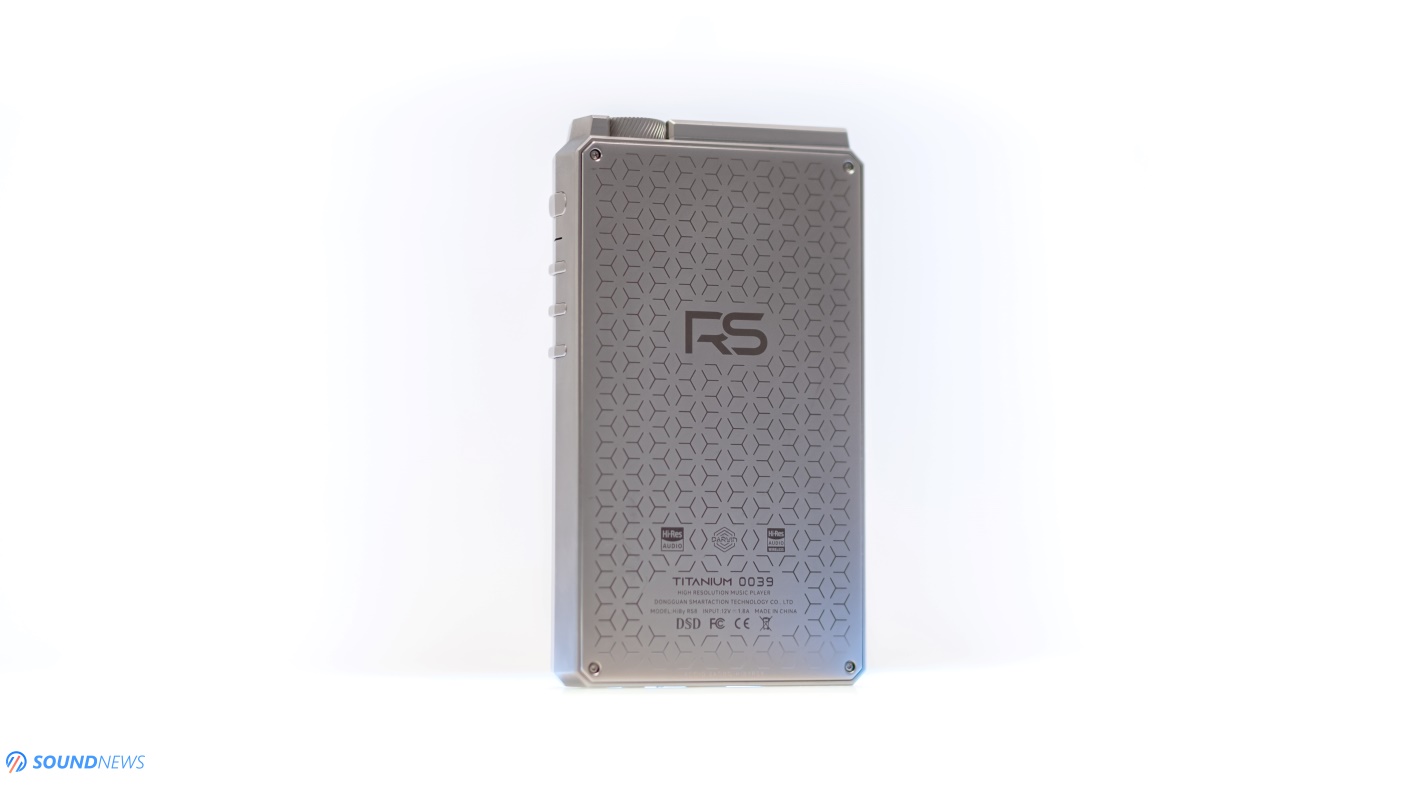
Design & Build Quality
I appreciate that Hiby is sticking with a time-tested design that can be found on all their latest DAPs, but what I like the most about RS8, is that you’ll find buttons only on its right side. After touching and playing with it for several months, I fell in love with its minimalist layout, never missing a button when going outside for a walk. I have bigger hands, so finding and pressing blindly the next or the previous buttons felt easier to say a FiiO M17 or M15S. RS8 looks a little different from other DAPs that passed through my hands, adding a coolness factor to it. At 584 grams, RS8 is currently the heaviest DAP HiBy is making, being more than two times heavier than their R6 PRO MKII, it’s by 270 grams heavier than its smaller brother RS6 and it’s even heavier than the R8 MKII which was just revealed.
When it comes to HiFi, I like the heavy stuff, even if we’re talking about portable devices as I know that the internal space was populated with high-quality components. FiiO’s M17, xDuoo XD05 PRO, and Enleum HPA-23RM are bigger and heavier and when I’m adding the RS8 near those giants, it doesn’t feel as heavy anymore. Although 584 grams will be felt in a pocket, especially on a sunny day, I like that it’s not a very large unit. I could barely squeeze those units in my pocket, but RS8 goes in and out without a hitch.
If you’re familiar with HiBy’s layout, then RS8 would feel at home. You need exactly one minute to learn its four buttons, inputs, and outputs and I wish other DAP manufacturers offered the same learning curve. Try doing that with the latest FiiO devices that have seven to eight buttons scattered on two sides, including several switches put underneath the unit.
Having only four buttons and a volume wheel is a huge problem solver when jogging outside, as there’s just an On/Off, play/pause, next and previous buttons, a volume wheel and that’s it! I don’t think it can get any simpler than this. Instead of using a machined aluminum alloy or pure copper case (RS6), Hiby went one step further and exchanged it with a pure titanium case, which I must add looks fantastic in real life. Raw titanium is, however, prone to fingerprints, water splashes and that’s why the bundled leather case should be always installed. The case is carved from a single piece of titanium, 19 hours of labor and polishing are needed until the final super-tough shell is ready to be used for a brand-new RS8.
While it is on the heavier side, it adds confidence that I’m dealing with a high-quality product and I must confess that its official pictures aren’t doing it justice. Besides its full titanium roll-cage, you’ll find a glass sheet on its face plate, cut to its body shape. It’s a 5.5” 1080p screen that isn’t totally bezel-less, but it doesn’t have a big chin, still making a stunning first impression. There’s just a screen on the front panel, looking modern and in line with today’s smartphone trends.
Hi-Res, Hi-Res Wireless, and Darwin logos were laser engraved on the back of its titanium body, adding some sort of high-end flair to it – a common practice used on top-of-the-line DAPs of today. Another interesting aspect is that the volume wheel isn’t sticking out, sitting on the same level with its upper body, so you won’t accidentally turn it up or down in a tight pocket. Its buttons are sticking out a little, but you can lock them if you please. I find them solid, firm to the touch, and never wobbling after several months of intense use.
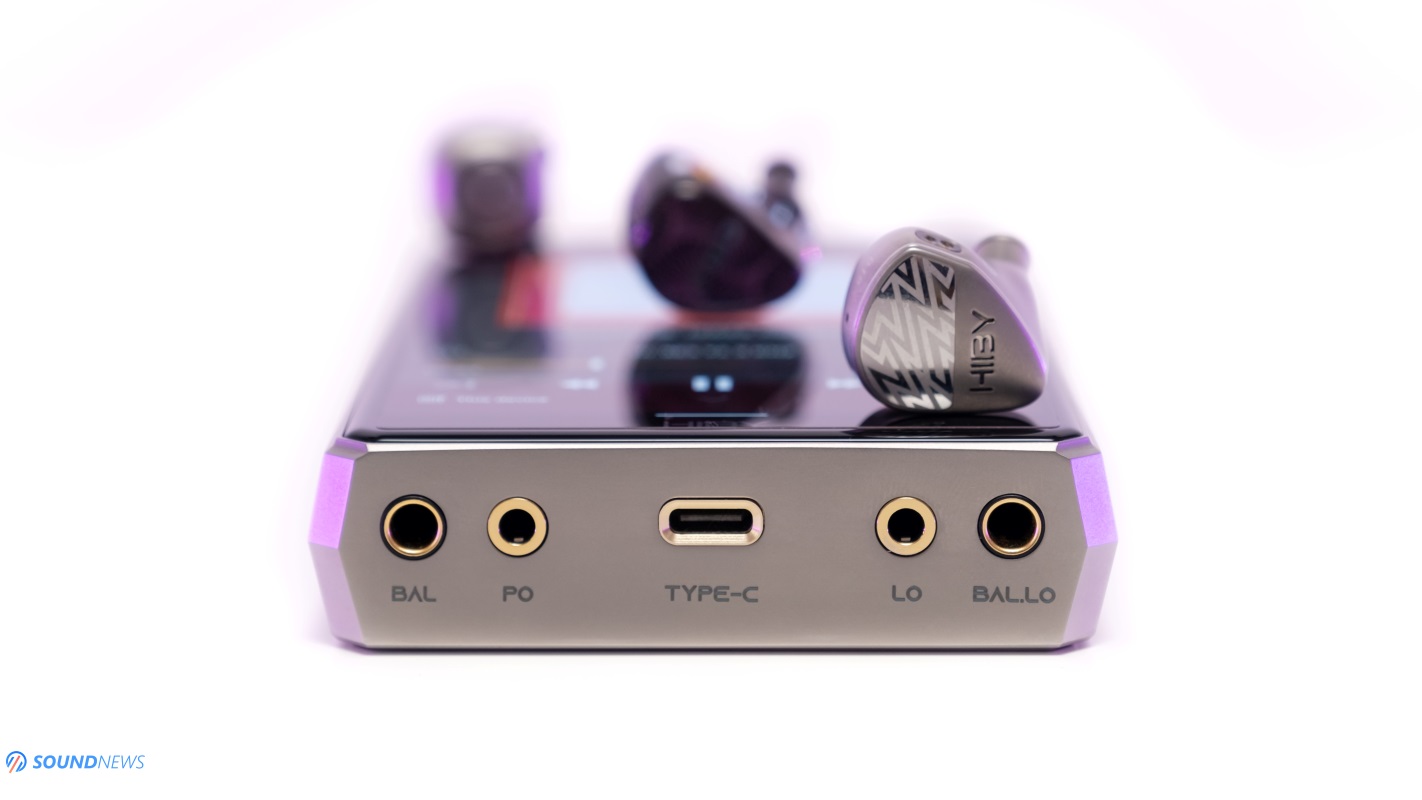
Layout & Buttons
Thanks to its solid body and clever button placement, I can use it single-handedly, which is a big plus in my book. You can spot a volume wheel up top, a micro-SD card slot to its left, an On/Off, play/pause, next and previous buttons on the right side, and all the inputs and outputs were moved to its bottom.
There you’ll find your balanced 4.4mm and single-ended 3.5mm Line-Out – just in case you’ll be adding a portable headphone amplifier or you’ll be using it as a streamer and DAC in a stereo rig. A USB Type-C sits exactly in the middle used for charging and data transfer and on the right, you have your usual 3.5mm SE and 4.4mm balanced headphone outputs.
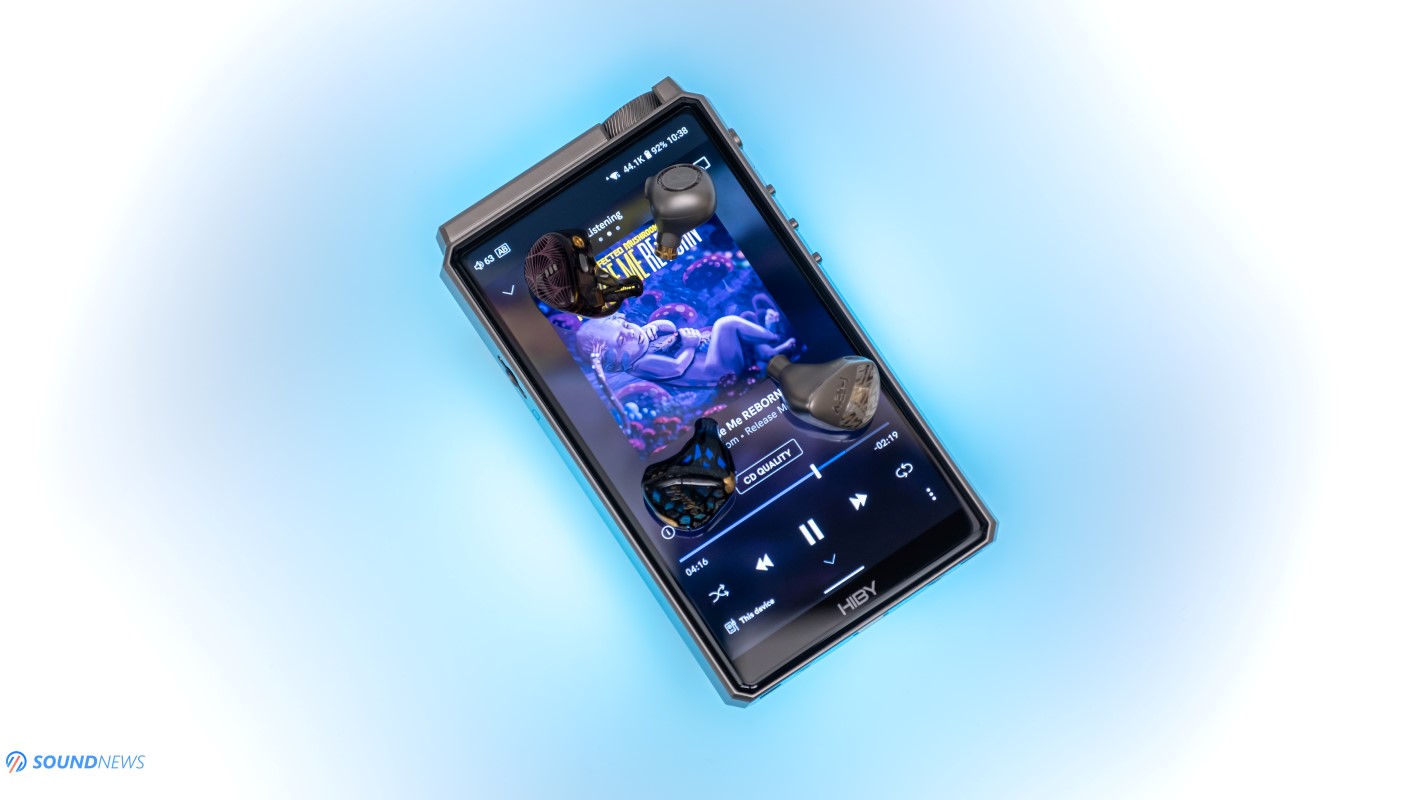
Display
RS8 uses a respectable 5.5” 1080 touchscreen, having a 400 PPI and 16:9 aspect ratio. Covered in Corning Gorilla Glass with oleophobic coating, it should resist a few scratches and dents, maybe even a drop or two.
From the looks of it, an IPS panel has been used due to good viewing angles. it’s a colorful and high-quality display that boosts an impressive contrast ratio. I find it quite vivid and impactful, the black and white levels are decent, but it won’t have the inky blacks of OLED screens, nor the eye-blinding brightness of the latest smartphones. Most importantly for me: the image quality is crisp, it’s vivid and sharp enough for that diagonal and resolution. Considering its case dimensions, I believe a 5.5” screen was a wise choice. It’s more than enough for multitasking, web browsing, music streaming, and light gaming on the go.
At this display size, you can even watch a few YouTube videos, there’s a gyroscope inside that can be enabled, you can browse web pages, reply to your emails, or do some light gaming on the go, as its newest silicon is more than capable of handling harder tasks…but I would still leave them for your smartphone, for a longer battery life.

Battery
Speaking of which, its massive digital and analog sections were made for desktop-class electronics, so it was mandatory to squeeze a massive battery inside and for that reason alone, RS8 uses the biggest battery I’ve seen on portable devices. How big it is exactly? From an already impressive 4500 mAh battery found on RS6, R5 II, and R6II and from a larger 5000 mAh one found on R6 PRO II, this time around they went with a ginormous 12.000 mAh battery on the RS8!
A bigger capacity battery would need a longer time frame to be fully charged, but thanks to Quick PD 2.0 quick charge that supports 20 W charging, It goes from zero to full charge in about ~4.5 hours and it will offer you back about ~12 hours of music playback on its regular jack and about ~8 hours on its balanced output. In real-time scenarios, using harder-to-drive desktop planar cans on its highest gain setting, Turbo Mode and Class-A enabled via the 4.4mm balanced output, I’ve had almost 7 hours of non-stop music playback, which is great considering I was squeezing a lot of juice from it. With their own ZETA IEMs on the 4.4mm BAL output, I’ve got 8 hours and 10 minutes, since mid-gain was more than enough for ultra-sensitive IEMs.
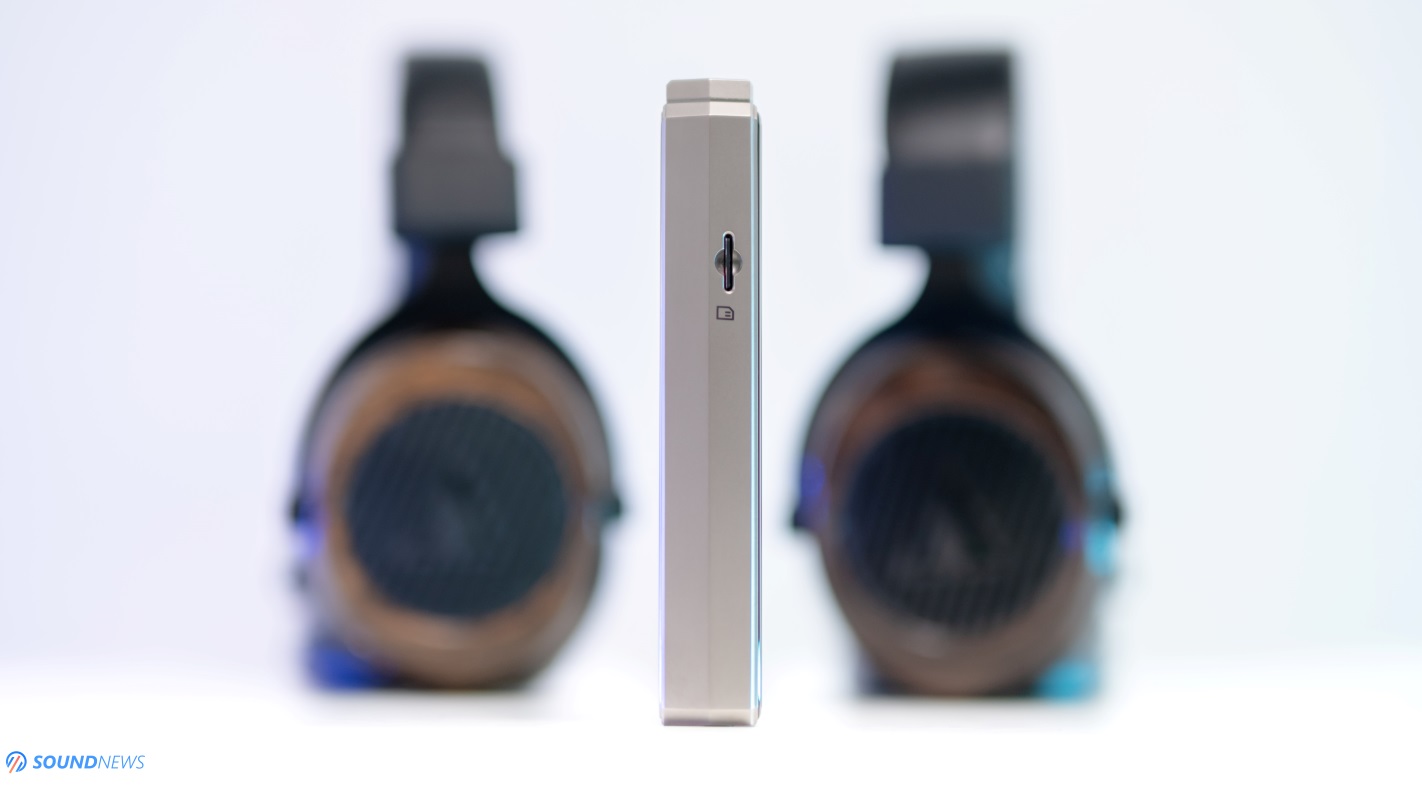
Under the hood of RS8
As far as I know, HiBy is currently the only DAP manufacturer that moved to Android 12, which makes it considerably more desirable and future-proof, compared to other manufacturers that are still using Android 10 (Hello Shanling and FiiO). The Snapdragon 665 8-core SoC which powers the world’s best portable units can be found here as well and you always count on it. You might be wondering why a 2019 SoC is being used in here and pretty much in any other flagship DAP, it’s really simple: It doesn’t consume lots of juice and it’s not that expensive to buy in lower quantities compared to smartphone manufacturers. SD 665 won’t challenge a brand-new smartphone, it certainly won’t move as fast, but as far as portable DAPs go, it will be on the same level as TOTL DAPs, and for me, that’s more than enough.
Its UI is pretty close to a modern smartphone and it almost moves like one. It boots decently fast, it turns off in mere seconds, and more importantly: it loads apps in a jiffy. I can easily multitask with it and go from HiBy Music to Qobuz, Tidal, Roon or Spotify in an instant. I can even play DSD files natively and then multitask like a champ, something that their older devices weren’t doing as quickly.
As you can expect, RS8 supports Google Play Store, from which you can install any desirable app, including games, and streaming apps like Tidal, Spotify, Qobuz, etc. You can install mail clients and anything you want really. Qobuz and Tidal worked great for me, I can even listen to my offline music which is great.
HiBy increased the RAM size from 4 Gb on RS6 to 8 GB on RS8, which seriously boosted its multitasking and web-browsing. You can now have multiple apps running in the background without ruining your listening experience. I can differentiate my Samsung S23 Ultra from the RS8, but in all fairness, there isn’t a massive difference in how they move and respond to my commands. The biggest improvement HiBy made to the RS8’s hardware was providing a much beefier 256 Gigs of ROM memory, up from 64 Gigs found on RS6, offered for music storing and if you would like to expand it, just use a microSD card up to 2 Tb in size. For the year we are living in 256 Gb, it’s not a lot of ROM memory, but 1 Tb MicroSD cards are dirt cheap right now, so no complaints.
By far, the most interesting aspect of RS8 is that we’re dealing with an advanced Darwin II architecture that is HiBy’s in-house developed digital signal processing architecture. In a breakthrough evolution of traditional R-2R architecture, the system includes resistor ladder linearity compensation and for the first time advanced features such as linear FIR filters, nonlinear harmonics control, switchable OS/ NOS modes, and DSD bypass. The Darwin architecture provides for up to 16x oversampling, with several filter types selectable to preserve linear phase and reproduce the original sound; customizable to fit specific IEMs, ensuring adaptability to different earphones/IEMs of different designs and driver configurations. Compared to the first-generation Darwin architecture, RS8 now uses 184 high-precision bipolar resistors, up from 92 unipolar resistors. 12 high-speed electronic switches have been used instead of 6 and overall, the dynamic range went up by 15 dBs! Which is a colossal number, which I’m sure will be translated into a much clearer and higher-resolution sound.
When making a high-performance digital-to-analog converter, the timing of the DAC is the second most important part and this is where RS8 shines bright. Rocking two femtosecond crystal oscillators, clocked at 45.158MHz and 49.152MHz respectively, the timing should be fully preserved, leading to a high-precision, low jitter and noise and of course to a pure sound.
The part that I’m very excited about is the headphone amplifier section, which is seriously, unlike anything I’ve seen on portable devices. But what’s so special about its headphone amp? You might ask. Seeing two OPA1652 working at the preamp stage (voltage amplification stage) seems like an unsual sight, however, seeing 8 dual bipolar transistors that can work in either Class-AB or Class-A for zero-crossover distortion and instantaneous power delivery, is something that you won’t see every day in portable devices. When it comes to raw power, RS8 can provide up to 780mW of power in 32 Ohms via its balanced output and up to 280mW via its single-ended output. On paper, it doesn’t look like RS8 could power all and everything, but I assure you that this is high-quality power and more will be revealed in a dedicated chapter.
A full MQA decoder is also on board. It fully unfolds MQA files (16X mode) not only in the HiBy Music app but also in third-party apps like Tidal. As for wireless capabilities, it supports 2.4G and 5G dual-band Wi-Fi, plus all those fancy Bluetooth codecs not only as a sender, but also as a receiver. It can send and receive in the best possible codecs (UAT and LDAC) and thanks to version 5.0, transfer speeds doubled and the distance quadrupled to their former devices.
There is so much more that was improved versus RS8 than I fear I will bore you down with long descriptions, so if you want to know more about it, then please check its official page right here.
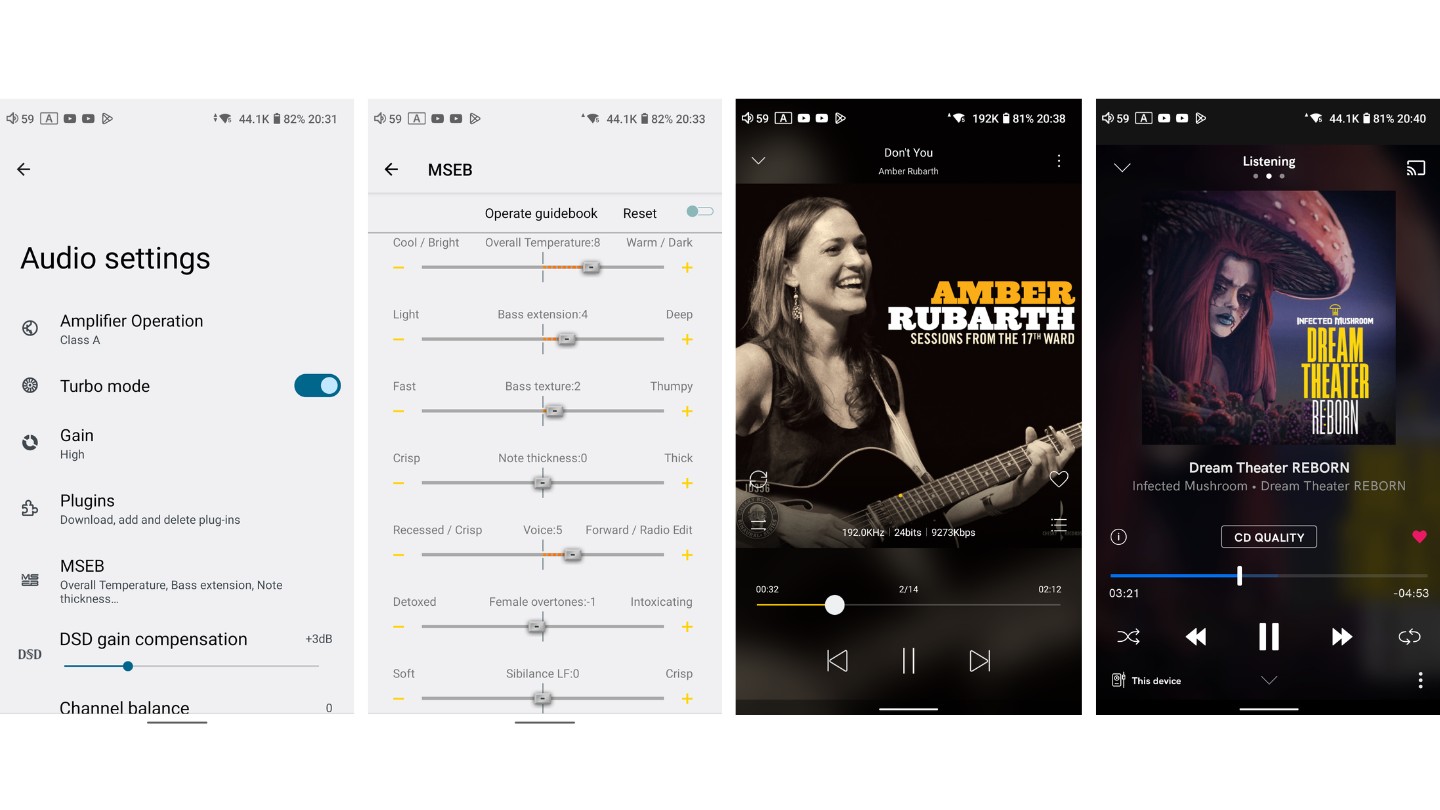
Graphical User Interface (GUI)
I already updated it to the latest FW 1.21 and so far, it didn’t crash on me. Compared to the latest FiiO and Shanling DAPs, HiBy does not provide a dual-boot possibility – one used for offline music listening only and an Android Mode for everything else. They don’t need any of that, as they developed a Direct Transport Architecture (DTA) that defeats Android’s original sample rate converter, providing a systemwide bit-perfect audio playback. What’s even cooler is that DTA bypasses sample rate conversion of most third-party apps even when using USB audio, achieving a bit-perfect audio output for almost any app. RS8 is running HiBy OS, an in-house developed system architecture that was optimized from the ground up for audio processing. Optimized for the Android 12 platform, it opens up the system for free installation of any Android app, on top of that additional features are being provided such as USB audio input and output, wireless audio input and output, and systemwide audio effects.
I’m a hardcore Hiby Music user, I’m using it on multiple devices, not only on their DAPs, it was updated multiple times already and plenty of features were being added in the latest updates. I particularly like the Wi-Fi music transfer and Hiby Cast – which lets you control your RS8 (that sits in your pocket for example) with the help of your smartphone or tablet.
HiBy implemented endless shortcuts, swipes in different directions will access distinct menus, change its volume, or other things and I strongly recommend checking its Quick Start Guide if you want to learn them all. You can check if new firmware was released and for convenience, I recommend updating it via OTA (Over the Air).
On FW 1.21, its GUI seems polished enough, it moves fast, I didn’t encounter stutters or slowdowns even when playing 32-bit Hi-Res or DSD content. Streaming MQA files from Tidal and then sending all that to a Bluetooth headphone is simple and intuitive and as much as I’ve tried slowing it down, I couldn’t do that, so no complaints here.
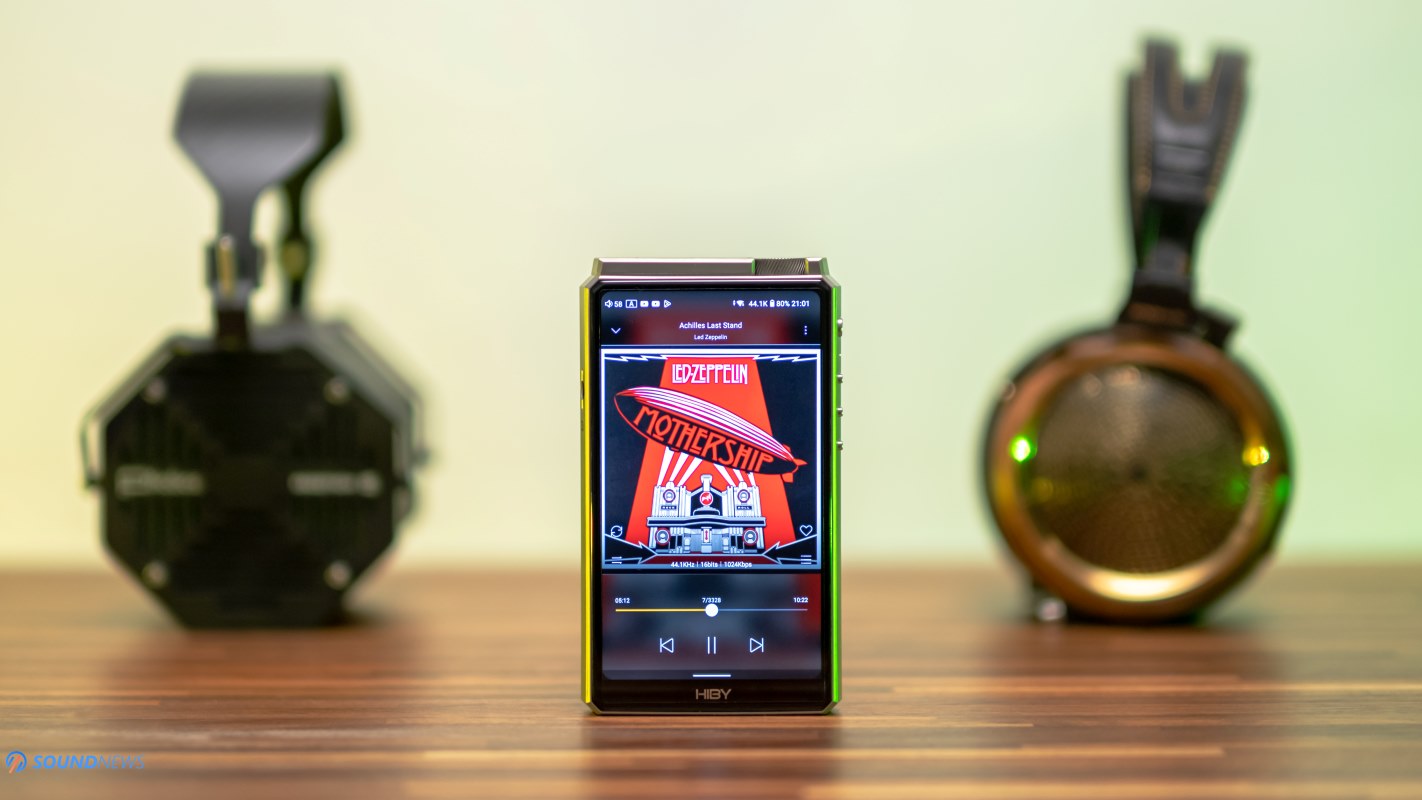
Sound Performance
I. Why RS8 is a Different Animal
From the early days of the iPod era, it was clear to me that a lot of water would flow over the Nile until we’ll see proper portable devices, specifically designed for faithful music reproduction. HiBy started their story with software music players back in the day, bundling it with third-party DAPs until they started crafting their units. HiBy Music was powering thousands of portable devices worldwide and then HiBy OS became a thing. The important thing to know with portable DAPs is that both the software and the hardware are equally important for faithful music reproduction and user experience. HiBy understood that from the start and I can safely say that right now, there isn’t a more advanced UI and sound tuning options than what HiBy is offering with their hardware.
While close competitors are relying only on digital filters and EQ options, HiBy is giving so much more freedom starting with Class-AB / Class A switch, Turbo Mode that supercharges the internal circuitry to work at a higher voltage, downloadable plugins that work in tandem with a hardware FPGA, Darwin controller that lets you select a PCM filer, a DSD filter, NOS (Non-Oversampling) and OS (Oversampling) options, harmonic controller, customized presets for tens of high-end IEMs and the most impressive of all: MSEB settings that lets you chose the tonality of the sound, the speed and punch of the transients, the sibilance control, you can make the sound thick or lightweight, soft or crisp and there are so many options available that you can listen to two RS8 units and they might sound like they don’t belong to the same manufacturer. HiBy is refining the Darwin Controller, Plugins and MSEB settings for several years now, adding extra features and settings to play with. There are so many of them at the time of writing that sometimes it feels a little overwhelming.
When I’m receiving new toys to play with that carry a battery inside, there’s always a compromise or two that will directly impact the final performance. It’s one thing having an unlimited space with desktop components and unleashing your wildest imagination by using some of the best and largest components money could buy and it’s a different story when you are dealing with a pocket-friendly unit, where every gram counts, carefully choosing components that wouldn’t degrade the sound quality, nor occupy lots of internal space. While most of their competitors are including off-the-shelf components such as DAC chips and tiny operational amplifiers (op-amps) and later trying to pull maximum performance out of them, HiBy pulled their heads outside the box and went with a 100% custom and one-of-a-kind design, by bending transistors to their will in the amp stage and resistors in the DAC stage, crafting an impressive R2R ladder DAC controlled by a powerful FPGA developed in-house. If you research a little deeper, then you’ll understand that RS8 isn’t using a regular R2R ladder DAC, but more like a hybrid one. You have the oversampling/non-oversampling circuit first, the FIR filters, harmonics controller, linearity compensation, and only then the resistor ladder DAC, followed by a Low Pass Filter (LPF) and headphone amplifier circuit.
The headphone amplifier is as impressive as the DAC circuit, using two operational amplifiers that would amplify the voltage output (preamp circuit), and then eight bipolar transistors will amplify the current output (power amp circuit) working in either class AB or Class-A (no switching) for a zero crossover distortion and instantaneous power delivery for headphone drivers.
If all of this reads like some gibberish nonsense, in much simpler terms, what HiBy has done with their RS8 is usually reserved for high-end desktop audio applications that occupy lots of desktop space. It so happens that my desktop setup is also powered by an R2R ladder DAC (Rockna Wavedream Signature XLR) and the best solid-state headphone amplifiers that money could buy are also fully discrete (transistor-based) Class-A amplifiers that are riding a roller coaster of emotions when music starts playing. While I have reviewed a few of the best DAPs from the likes of FiiO and Shanling, I’m sorry but neither can compete in terms of uniqueness, coolness factor, engineering skills, and most importantly: sound quality, and let’s break it down step by step.
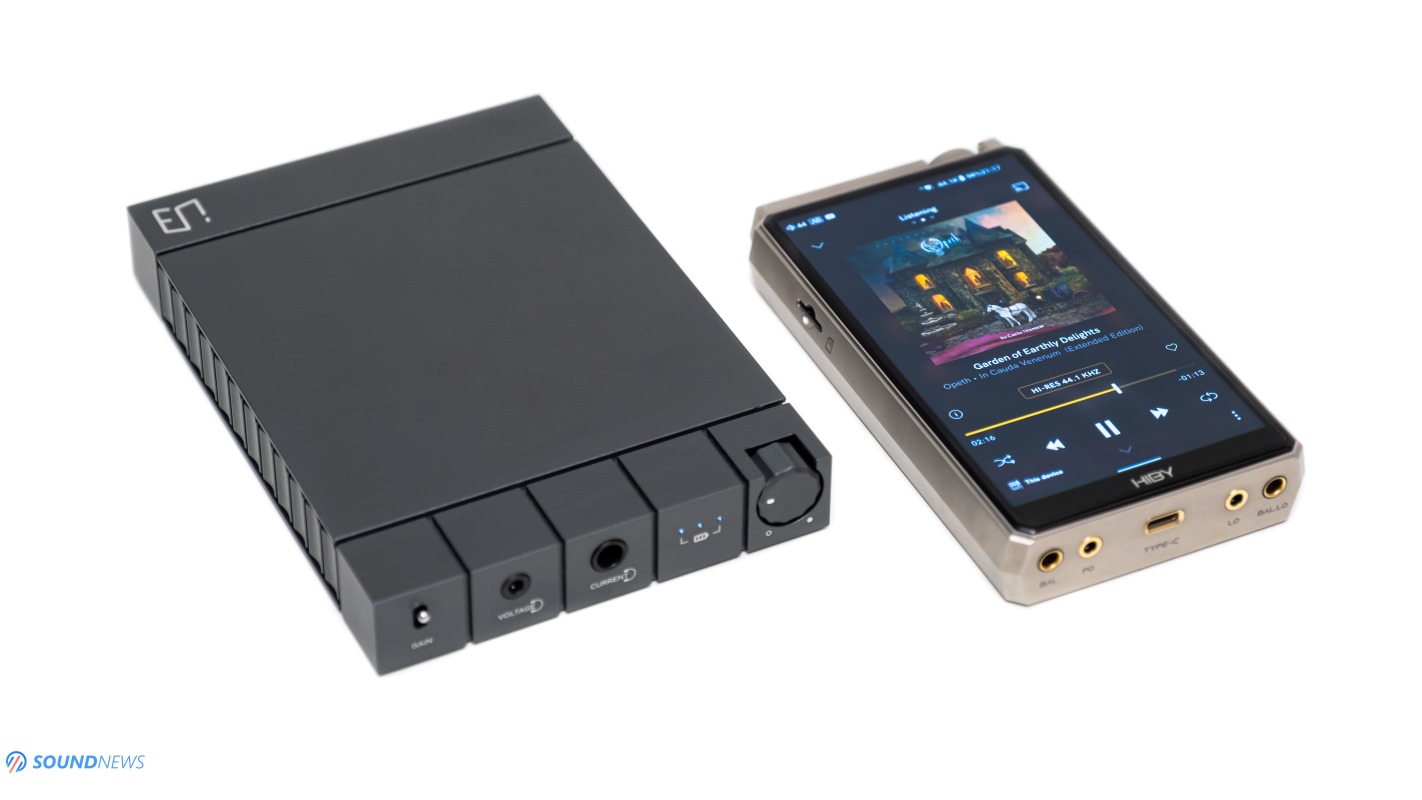
II. Sound Impressions
If you are getting the RS8, then you should arm yourselves with lots of patience as those 12 high-speed switches, 184 high-precision resistors, 8 bipolar transistors, 47 tantalum capacitors, 10 thin-film POSCAPs, and 4 ELNA Silmic II silk caps will need lots and I mean, LOTS of time to settle down and start working at their optimum parameters. The RS8 didn’t impress me in the first day of use, sounding thinner than usual, having little to no bass, and worst of all: never sounding dynamic or impactful. I was already questioning If I got a defective unit or if I should have a little bit of patience.
The sound was clear from the start and quite holographic I must add, but dynamics weren’t there where I wanted them to be and I was forcing myself to enjoy it. I could sense the potential behind it, as the sound was changing by the hour, and after around 150 hours of use, the sound was no longer shifting to the bright or dark side. My desktop R2R DAC needed more than 300 hours of use until it settled down if that makes you feel better, but it’s a much bigger and scarier unit, so it all makes sense.
After wresting for two weeks with several IEMs and later with a wall of planar headphones via the balanced output, I finally sat down for a prolonged listening session, which is still regularly happening day by day. Initially, I thought about building a secondary headphone system to be used before bedtime, but RS8 together with the Enleum HPA-23RM provided such sonic wizardry, that I immediately shift-deleted the initial idea.
The very first thing that hit me hard wasn’t its life-like tonality or rich and full-bodied character, but its effortlessness! Going back to a chip-based converter almost feels like my music goes from buttery smooth to processed, grainy, and robotic sounding. With RS8 the sound is flowing gracefully towards my eardrums and nothing feels forced or out of place. The sound is simply pouring down on you without trying to impress you with its speed or decay. If you ever tried a really good stereo setup, things like speed or decay won’t matter, as everything will click into place, getting positive vibes along the way and that’s what I’m getting with the RS8.
While there are lots of empty spaces in between the notes, there’s always a thin silk thread that binds them together, you are no longer listening to mere sounds, to bass, midrange and treble, you are now listening to the final act, to the music in all its glory and this my friends aren’t easy tricks to pull off.
The second thought that was tingling my senses, was without a doubt the scale of the music, the stage, the depth, and the grand holography that I didn’t expect. Its little brother RS6 also had a natural flow of the music, but it wasn’t as open and grand sounding. From the units that I have tried as of late, I think that only FiiO’s M17 can wrestle with it for a few rounds when it comes to the grand scale of things. There is always some sort of order when music plays, for example, the distance between the musicians and the listener is always predefined, sometimes it’s close and personal and sometimes it’s too distant. Before pressing play, it’s always a guessing game for me, will this track sound 3D with sounds coming from behind my back? Or will I have plenty of sounds to my left and right and way too little in the middle (extreme stereo effect) or maybe, everything will be located exactly in the middle and way too little would be pushed to my peripheral hearing (mono records)? The truth is, all of the above happened way too many times and RS8 was very quick to react depending on the music played and headphones used. While I still cherish some of the IEMs around here, with HiBy’s ZETA being one of my favorites, bigger drivers would always deliver bigger sounds and that’s precisely why I’m traveling with a pair of closed-back planars – because the sound would always be massive and holographic if live records or orchestral work hops on my playlist.
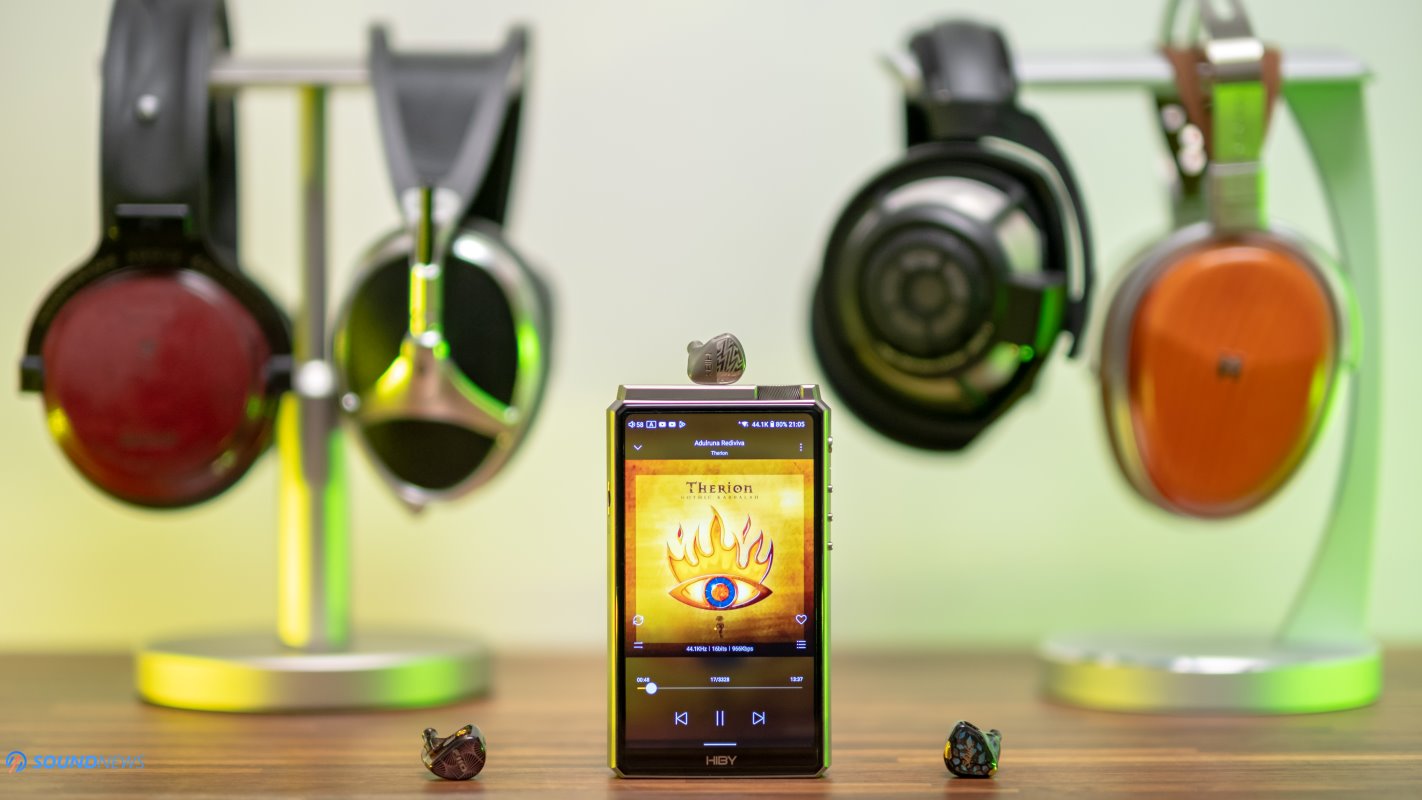
III. Power Output
Although RS8 is far from being the most powerful DAP tested around here (FiiO’s M17 still holds that title with 3 Watts per channel in DC power mode) with just 780 mW of power per channel into 32 Ohms via the 4.4mm balanced output, in my opinion, this is a high-quality power compared to what we’re usually getting with 100% op-amp based headphone amplifiers. Switch it to Class-A working mode in tandem with the Turbo Mode which super-charges the working voltage of the headphone amplifier circuit from +/-6V to +/-7.5V and suddenly, you start realizing that this isn’t only about how much volume you are getting in return, but also about how spacious, deep and incredibly punchy the sound can get.
When I’m listening to portable devices regardless of their size, even if I’m never going past 90 dB volume-wise, they can’t compete with a properly made desktop rig at the very same 90 dB sound pressure level. Something is always limiting the sound of the portables, maybe it’s the scale, the effortlessness, or just plain dynamics, resolution and transparency are lacking. With RS8, however, I’m not getting the same feelings. While I’m sometimes reaching its upper power limits with several planar-magnetic headphones, the sound never shrinks in size, the stage is not closing in limiting my lateral vision, and the dynamics are not slowing down as if nothing stays in the way of the sound. We aren’t getting the power-overwhelming nature of the FiiO M17 in DC power mode that could push even a pair of HiFiMan Susvara, but we’re getting a more spacious sound in return, more meat on the bone, more textures and micro dynamics that the raw nature of M17 couldn’t handle. RS8 feels more refined sounding, more effortless, and high-end in a way, skills that I’m usually getting from desktop fully discrete Class-A amplifiers.
I don’t need to power the HiFiMan Susvara, the Abyss AB1266 Phi TC, or the DCA Stealth and Expanse on the go, all those are meant to be powered by desktop amplifiers that can provide all the current they are craving. If a portable unit is more than capable of driving a pair of Meze Elite, Liric, Kennerton Rognir, and Sennheiser HD800S, plus a bunch of portable headphones and a bag of colorful IEMs, then I’m stocked for months. That’s more than enough for me. RS8 wasn’t able to push the most difficult loads, nor was it unlocking the fifth gear with electronic music with hard-to-drive planars, but it was more than capable of driving the above-mentioned headphones with aplomb. Instead of using IEMs in my travels, the Kennerton Rognir planar is the one that goes with me to different parts of the world, together with the RS8. This double-impact duo is inseparable, they were meant for each other. But, why the RS8 with the Rognir and not the M17 you might ask. It’s simple! RS8 reminds me about my desktop setup, giving me back about 90-92% of that sound, something that no other DAP could pull off. The full-bodied textures are there, the crazy transients of Class-A amplifier are also there, the effortlessness is in place and the sound is always vast and expansive. From my collection of headphones, Susvaras were the ones that suffered the most, Sennheiser’s HD800S worked nicely to almost fabulous and the rest of them worked as if a desktop amplifier was driving them.
I bought myself an Enleum HPA-23RM last year, which is (probably) the nicest portable amplifier money could buy right now. It’s a combination of multiple factors, but all in all, I don’t think there is a more technical and transparent-sounding amplifier out there. When I’m using it with the RS8, I can almost swear that I have a Rockna Wavedream Signature in one of my pockets and an Enleum AMP-23R in my other pocket, driving whatever sits on my melon and in this exact configuration I was able to drive pretty much anything: Susvaras, Eight hundreds, Abysses, DCAs, you name it.
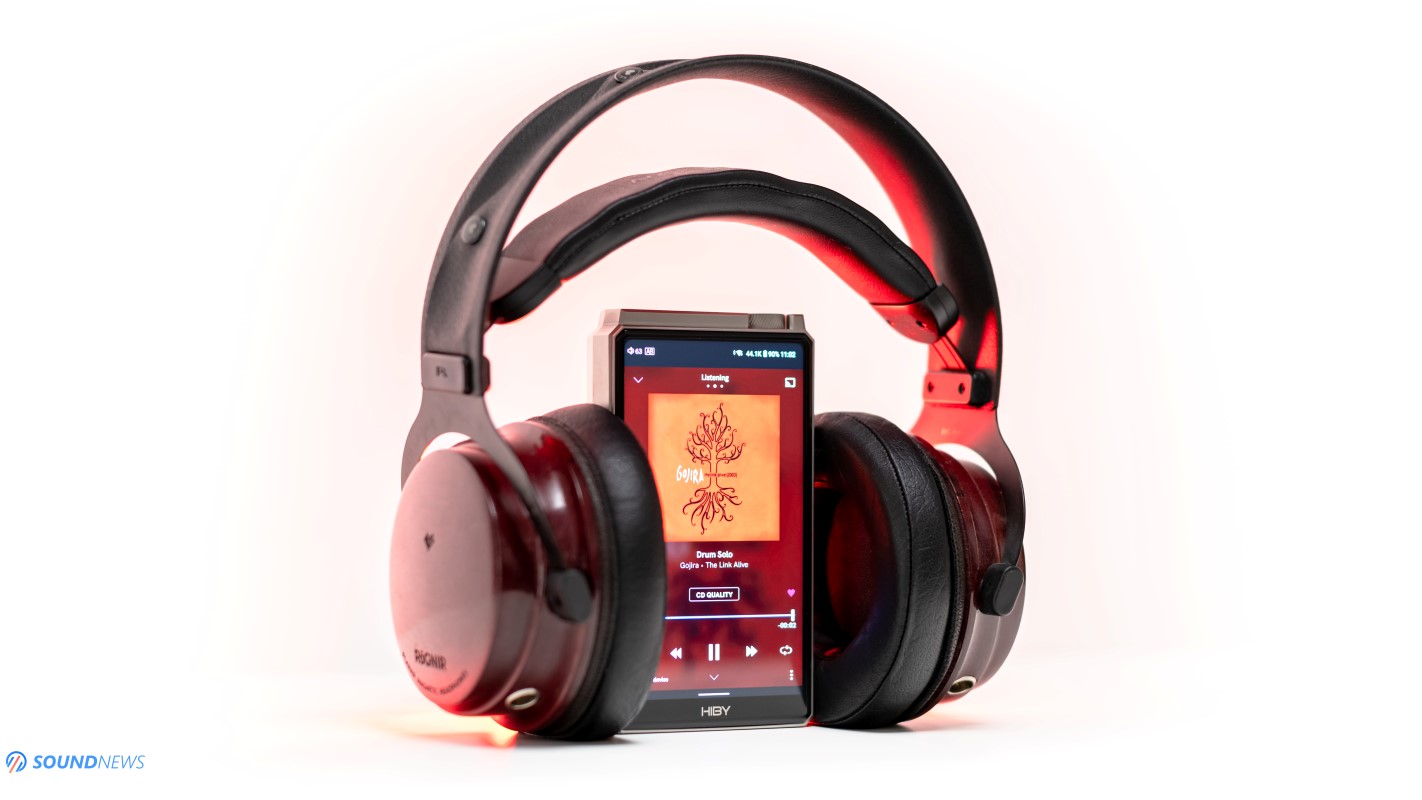
IV. Dynamics & Transients
The transient response guy won’t be impressed by merely okay dynamics, as dynamics are my bread and butter. I can’t live without them, I can’t enjoy my tunes when my limbs are not dancing to the rhythm of the music and if you ever saw me listening to music, then you know exactly with whom you’re dealing. Music speaks to me and I’m responding, it’s nothing out of the ordinary. Usually, crazy dynamics are coming bundled with huge power reserves. This isn’t always true, but most of the time, massive power reserves will always push and pull drivers like ragdolls and deliver all the energy you can muster.
However, I’ve dealt with amplifiers that weren’t so impressive on the surface, yet they went in and out in microseconds, having an incredible grip over speaker or headphone drivers. Enleum amplifiers are the ones that are coming to mind – small, adorable, without having too much power on tap, but please hold your jaw in place when the music starts playing with them. While RS8 isn’t using any current-drive technology as Enleum amps do, its effortless nature even on over-crowded tracks already speaks volumes about the power handling and overall quality it offers.
I think RS8 punches just fine and with the right tunes you’ll be toe-tapping in no time. It won’t go ultra-fast mode on you like FiiO’s M17 does, instead, it will sound just right. I don’t find it lightning quick, just close to the real thing, it won’t try to sound better than the recording itself, it won’t pull crazy stunts on you, it will just sound real. I won’t use the natural word, as real means so much more to me. When you add effortlessness with a massive stage, impressive depth, and natural overtones, then everything clicks into place, becoming real sounding, like there isn’t a digital-to-analog conversion stage anymore, followed by a pre and power stage. It just sounds like unamplified music unfolding in front of you and just for you.
The brave ones that crave for a nicer impact down low, can always engage the DRX10K Dynamics plugin (Joseph, you rock!) which enhances the pace, rhythm, and timing. You can go overboard with it which might hurt the cleanness of the sound. However, if you need a recommendation, leave everything at zero and go with a 0.2 or 0.3X in the bass region – this is what I’m using with electronic music.
Infected Mushroom just released two masterfully done EPs, Dream Theater (Qobuz / Tidal) and Release Me (Qobuz / Tidal) which I’m sure will be added to their upcoming RE:BORN album. All the major streaming platforms already have them online and if you’re into psy-trance, then you should definitely check them out. For the unaware, Infected Mushroom gained the respect of the HiFi community back in the day when they revealed using high-end dynamic and planar headphones in their studios. These guys always shined bright with their clean grooves, fast tempos, outstanding spatiality, and overall, high-quality standards. A few desktop R2R ladder DACs aren’t doing proper justice to electronica music, sounding average with fast-paced tunes, but RS8 with its custom nature overthrown the limitations of the resistor ladder, sounding crisper, faster, and punchier versus entry to mid-level converters. DRX10K Dynamics plugin could (sometimes) add a helping hand, especially with headphones that aren’t known to be rendering sub-bass information impeccably such as HD800S or mid-level HiFiMan headphones. RS8 added life to the Ananda Nano, Arya Organic, and HD800S with the right settings, so much so, that these tracks were playing on repeat at least three times a day. Overall, I’d say dynamics are getting an impressive 9.5 out of 10, while the (need for) speed gets a solid 8.5.

V. Soundstage & Depth
I’m still shaking remembering everything we saw, listened to (and licked) in Alborg at the Audio Group Denmark factory visit in December 2023. After trying most (if not all) loudspeaker brands at various HiFi shows across the globe, I’m sure of one thing: you can’t beat Borresen Acoustics and Raidho loudspeakers when it comes to technicalities (resolution, instant transients & dynamic range) and scale of the music when considering the size of the speakers (very important). My colleague and newest writer around here – Catalin, owns the Raidho TD 1.2, and let me tell you that I don’t think bigger-sounding bookshelf speakers exist today. Fair and square. It so happens that I had the RS8 with me and I let the AGD crew try it for a few tracks and although none of them invested time and money into a head-fi battle station as I did, they were genuinely excited about the scale of the music and how everything sounded speaker like. If you’re crazy about dynamics and transients as a whole, you can do better than RS8 and FiiO’s M17 is a prime example. However, when it comes to a holographic presentation that isn’t limiting the sound travel in any way, then I’m not so sure RS8 can be beaten at its own game with current technology. It needs to be said that while I did try Cayin’s N8 II and N7 DAPs on various occasions, I didn’t have the RS8 with me for a direct comparison, but I still get a weird feeling in my gut that RS8 does soundstage in a league of its own.
I tested a few trans-portable DAC/Amps that were impressive in the scale department without costing a small fortune. The latest xDuoo XD05 PRO, FiiO’s Q7, and Shanling’s H7 were mighty impressive sounding in this regard, especially when considering their asking price. Their imaging was to die for and the soundstage reminded me of desktop units rather than mobile devices. The only problem with those units was their size to be carried around and that you needed a source / digital transport that would deliver the tunes (usually – a smartphone). Knowing that all of the above are already clunkier than RS8 without even thinking about the smartphone that needs to be attached, RS8 slowly began shining brighter in my hands. $3.299 is no pocket change for sure and some don’t have a desktop setup that costs as much, but considering that RS8 is already bundled with everything a streaming head and music lover truly needs, crafted at the highest standards, then the asking price doesn’t seem as astronomical anymore.
In my mind, RS8 outshines all of the above units in pretty much every department, except for power, and if we’re talking about scale, depth, and imagining, RS8 impresses with or without MSEB settings and plugins. Simple as that.
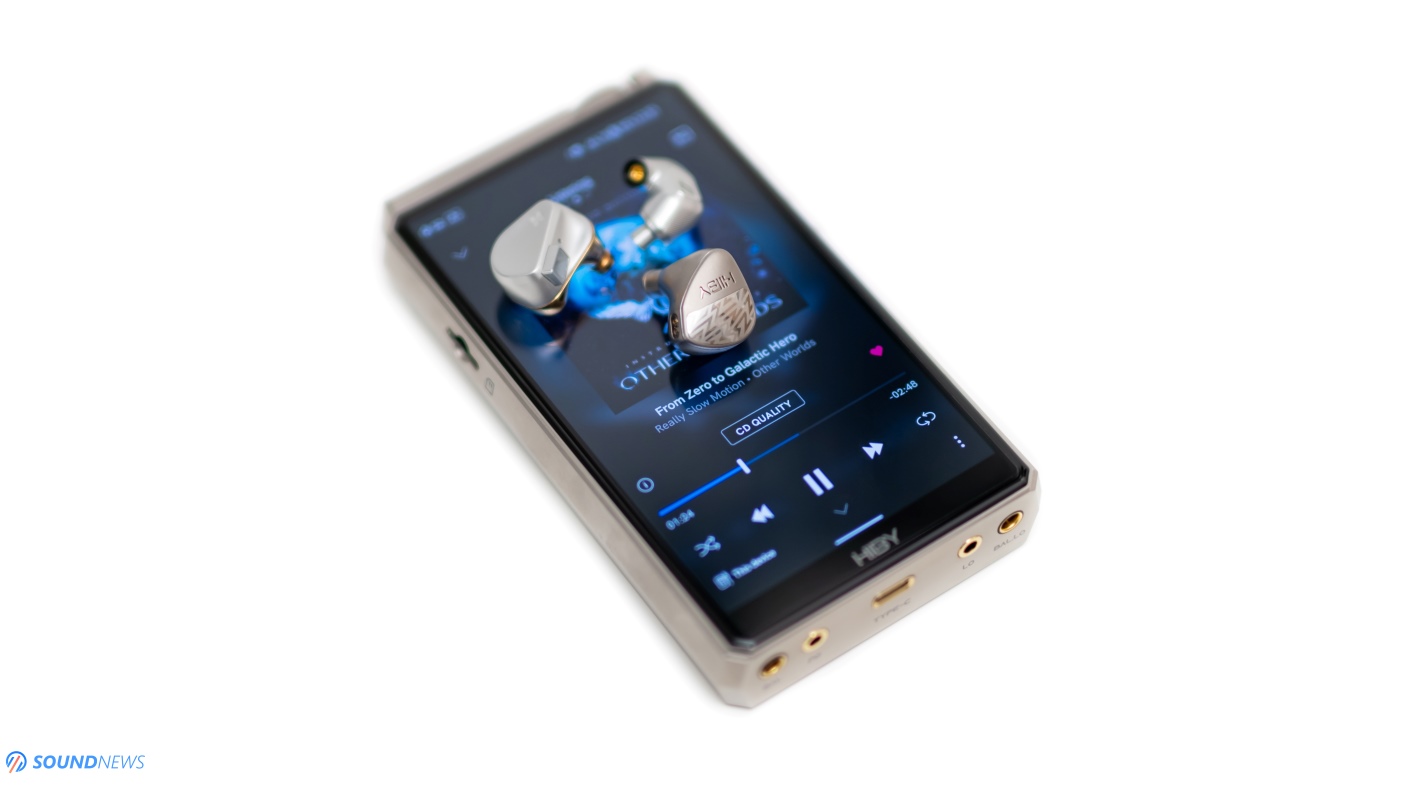
VI. Resolution & Transparency
When I reviewed HiBy’s first R2R DAP, the RS6 back in 2022, I was impressed by everything sans detail retrieval which was fine, but not outstanding. RS6 was noiseless with sensitive IEMs, never raising the noise floor to dangerous levels, but it didn’t shine that much when trying to reveal as much information as possible to the listener. FiiO’s M17 felt crisper and cleaner sounding and the difference wasn’t a tiny one. When I reviewed HiBy’s smallest R2R DAP, the RS2 back in October of 2022, HiBy proved that great sonics can be had for as little as $479, if you accepted the fact that RS2 was an offline-only music player.
RS8 is however a very different machine, a much higher performance one and although the biggest changes didn’t happen in this region, the dynamic range did see an impressive boost. I still feel that high-end chip-based DAPs could reach higher peaks in terms of dynamic range and perceived detail, but RS8 was not lagging anymore. There isn’t a sizable gap between RS8 and M17 for example and on top of that, HiBy’s best is more resolving than XD05 PRO, Q7, and H7, which I previously mentioned.
Knowing that RS8 could be on par with the best DAPs tested around here, I was curious to know if the DAC section could be further improved if the internal headphone amplifier is bypassed. I attached the Enleum HPA-23RM to its 3.5mm line-out and started listening more carefully. I didn’t need more than a few seconds to realize that in DAC mode, RS8 could reach higher altitudes performance-wise. RS8 together with HPA-23RM simply reached a musical nirvana that doesn’t need an explanation. A poet once said “Music is the answer to a no-asked question” and for no reason, I’m always thinking about this quote when both RS8 and HPA-23RM are engaged. There is not that much to add here, you can’t get better than this from battery-operated devices, starting with the scale and finishing with the resolution and transparency.
I won’t recommend you getting the HPA-23RM if you haven’t wandered into the high-end audio territory yet, but if you have the courage and the funds, then by all means necessary, it’s like having the best sound on the go without a single compromise. I don’t like using big words such as best of, best in class, and unbeatable when trying to describe the resolution of the RS8 and HPA-23RM combo, but I always get an overwhelming sensation that there is nothing more I can hear with any of my headphones. I’m lucky enough to try out the majority of current production reference headphone amplifiers and DACs, and I can safely say that RS8 linked to HPA-23RM offers me a similar detail retrieval that creates a sensation of real, unamplified music.
I now get why HiBy developed the CR08 dock, designed to work in tandem with RS8 via its line-out. With CR08, RS8 transforms into a high-end music streamer and DAC for your stereo setup and while I don’t have it yet, I’ll be ordering one ASAP that will be offering RCA and XLR outputs from RS8’s line-out.
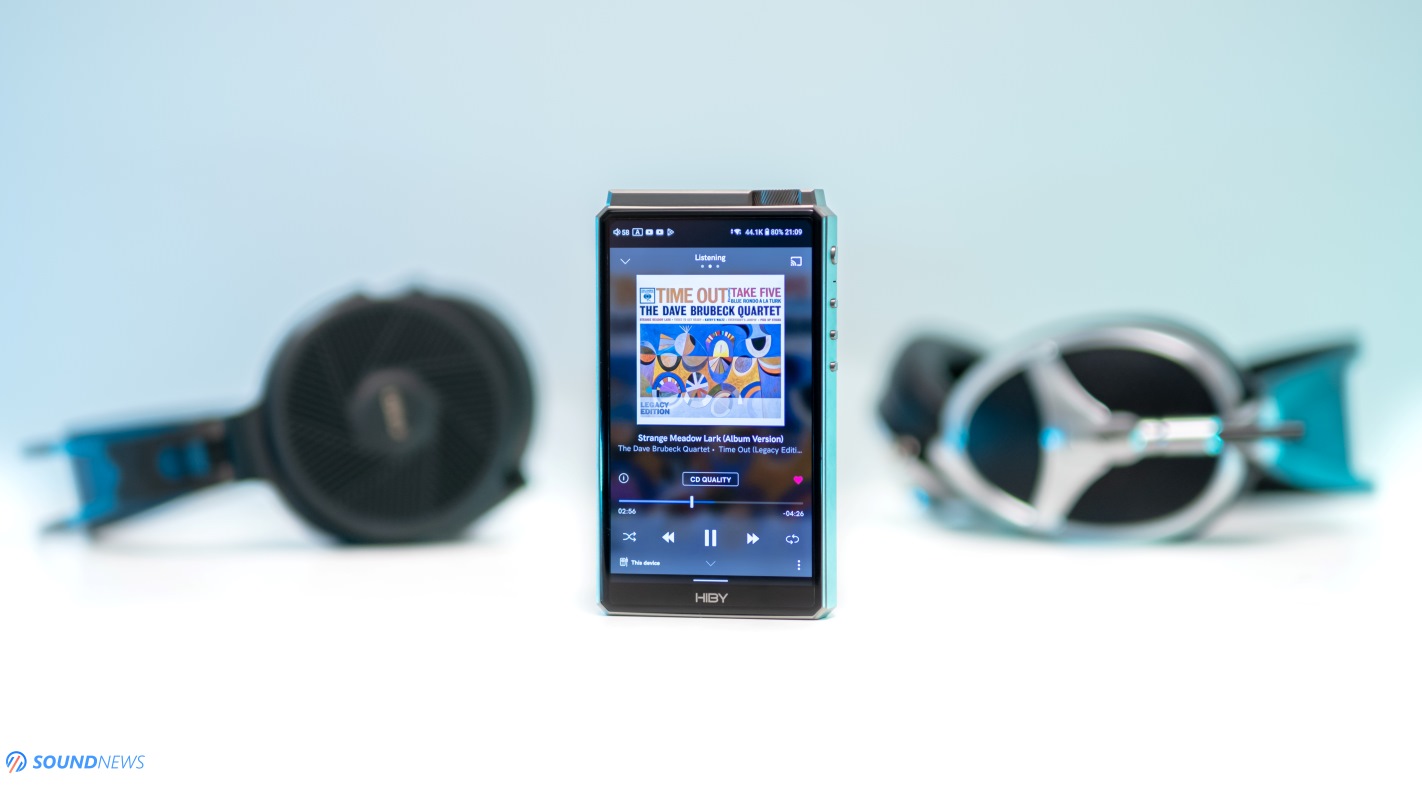
Frequency Response
VII. Bass
There’s the thing: if you like your basses clear and layered, deep reaching and impactful, then there are two things that you should engage beforehand, regardless if you’re using IEMs or full-sized headphones. Engage the Turbo Mode and then the Class-A working mode of the headphone amplifier. The gain settings won’t impact the performance of the low-end, but the other two will have a direct impact on dynamics and low-end performance. Class-A mode is a lot more helpful for current hungry planars which will get continuous power from the amp section. Some IEMs benefit more from the Class-A mode, some not so much, but generally speaking – all loads will sound livelier and more cursive, while Turbo Mode is, simply put, a Dynamics Enhancer 2000™, always improving the sound at the cost of a lower battery life. If both of these are engaged, then fasten your seatbelt as the bass gets meaner, stronger, more present all around, and cleaner sounding as well. Class-A mode adds a layer of refinement and flow to the whole affair and it seems that the whole frequency response will get these beneficial effects. If you know how solid-state integrated amplifiers work, then you won’t be surprised to find a preamp stage that uses two op-amps and a fully discrete transistor-based power amp stage within the RS8. From the DAPs that were tested around here, only HiBy creations used tiny transistors biased into full Class-A operation that leveled up the bass to a legendary status. If you’re an uncurable bass head and you crave a little bit more presence, then the DRX10K Dynamics plugin will unleash the Kraken for you.

VIII. Midrange
I specifically avoided mentioning its tonality for thirteen pages now and that’s because it’s different from what you’re getting from regular desktop-sized R2R ladder DACs. While the likes of Denafrips, Musician Audio, and Audio-GD are trying to boost the midrange, tilting the balance into warm-sounding territory with most of their devices and slowly rolling off small portions from upper treble’s energy, HiBy didn’t walk the same path. You still get the juicy textures of R2R DACs, you get lots of meat on the bone, boldness, and a mean character, but you don’t get the boosted midrange that stands head and shoulders above the rest of the frequency response.
In this regard, RS8 follows the same path that Rockna Wavedream Signature paved 10 years ago. High fidelity means faithful music reproduction, without altering the original signal in any way and this is where RS8 is shining bright. You could still make the midrange warmer and fuller-bodied if you want so with the help of MSEB settings, but in truth, I liked the sound of the RS8 in its stock form a bit more with Turbo Mode and Class-A engaged. The midrange is beautifully rendered by default, it doesn’t linger a microsecond longer, it doesn’t feel overly smooth or recessed into the abyss, just spooky real sounding.
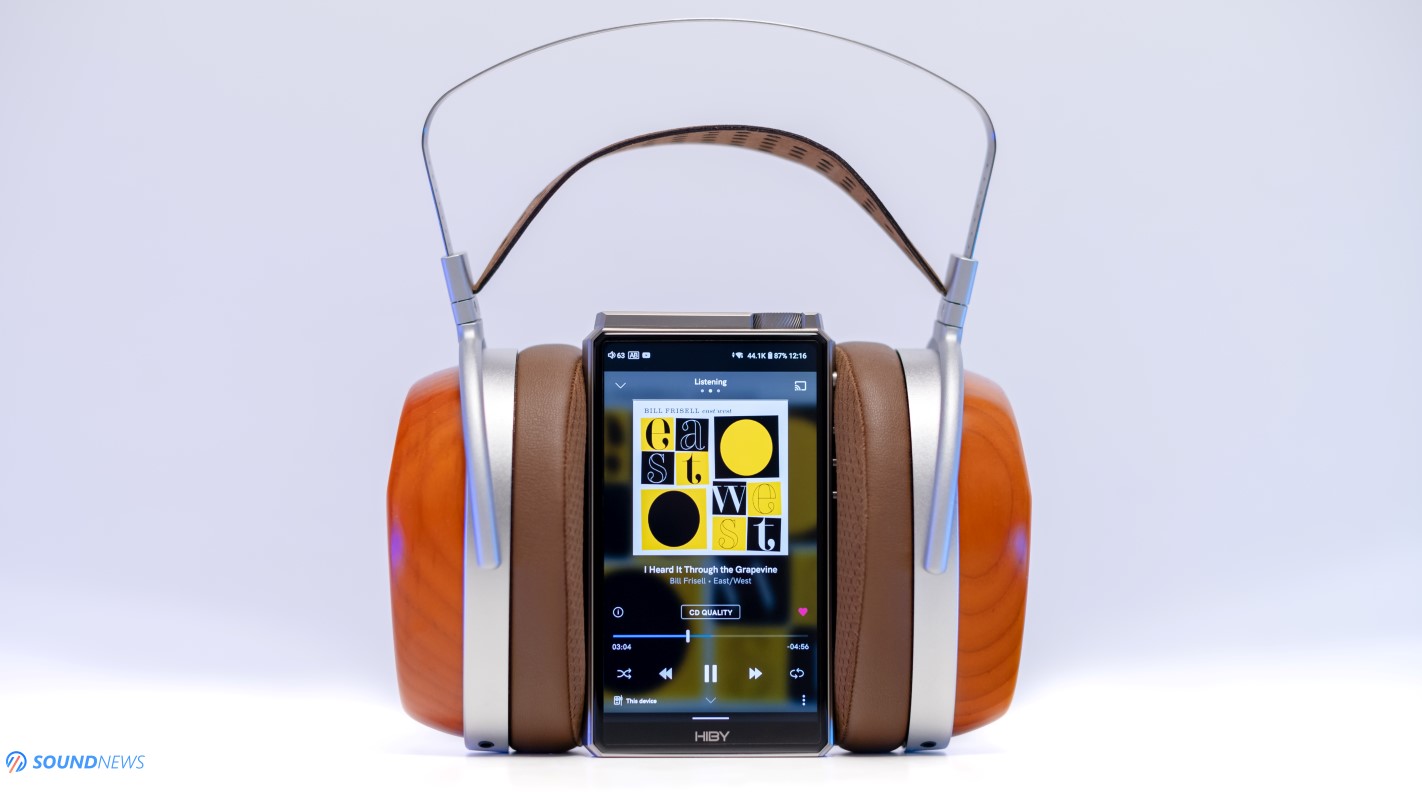
IX. Treble
The trebles aren’t getting the standard R2R treatment as well. You’ll hear it echoing loud and clear and don’t even think about rolling information somewhere past 16 kHz. I’m aging slowly as a good wine and sadly my hearing is as well. My right ear measures almost 17 kHz and my left one is slightly better at 17.5 kHz, so yeah! You could still trust these rusty ears of mine. I’m still getting offended by bright tilted electronics and diaphragms, but I hear none of that coming from the RS8. What I like the most about its treble, is not the immaculate clarity, extension, and presence, but its life-like vibration and timing. Getting trebles right could be a life-long work for some speaker and headphone manufacturers and I’m sure HiBy spent a good deal of research and development until the planets aligned and trebles became resolving and natural sounding at the same time.
You get plenty of spark and bite with treble-intensive tracks and lots of smoothness and relaxation with century-old tunes. Please don’t expect it to beatify the trebles in any way, but it will certainly remove traces of digitus and listening fatigue.
It worked great with orchestral music, with classical and jazz and I banged my head hard on rock and metal tunes and at the end of the day, there wasn’t a musical genre that didn’t sound as intended on the RS8.
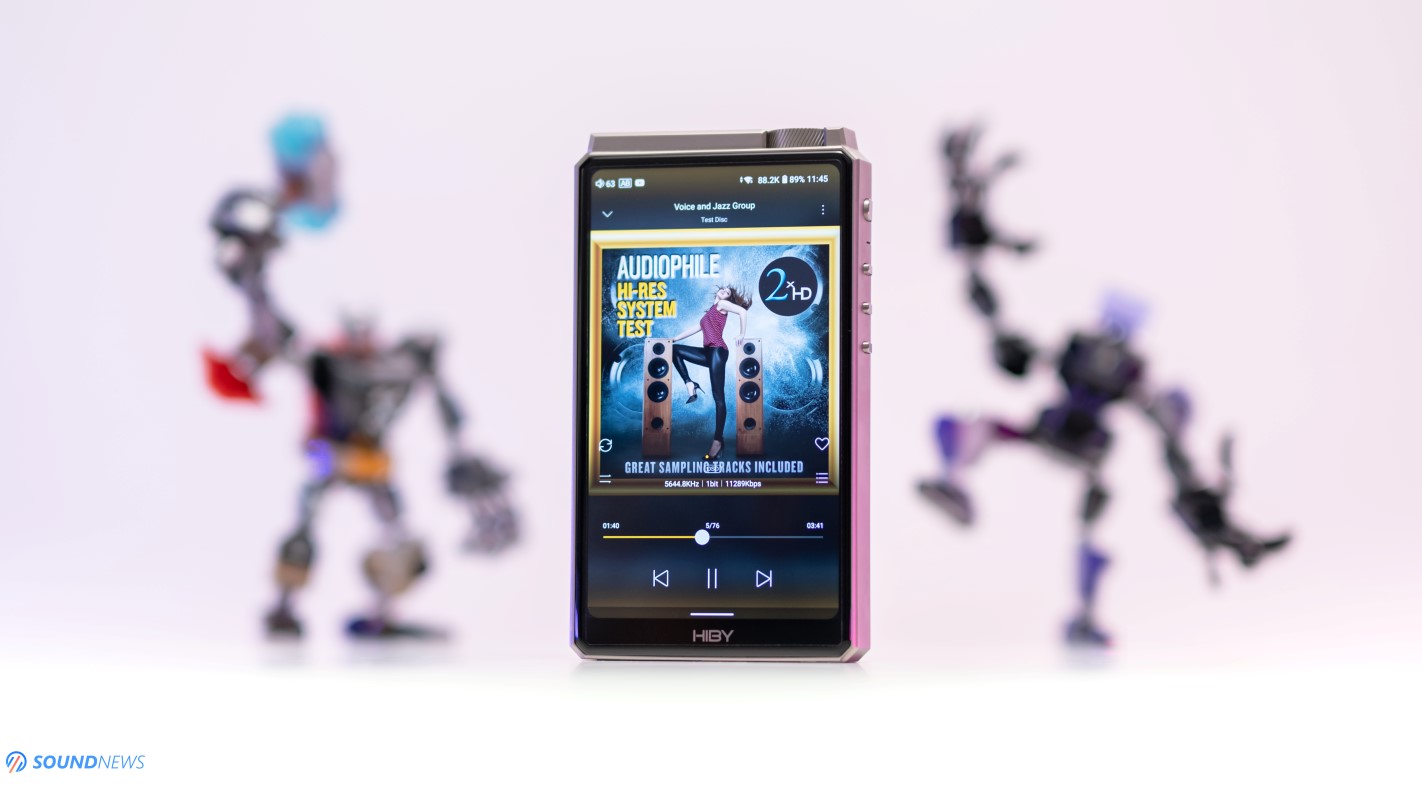
My Conclusion
Looking back at portable digital audio players that passed through my hands, the coolest looking and the nicest sounding one below one-kilo buck was HiBy’s R6 PRO II. It looked unlike anything I’ve seen in that price range and it sounded like a flagship unit, without having a lofty price tag attached.
For thinner pockets, they now offer both online and offline players that carry distinct sound signatures starting at just $89! (R2 II). HiBy didn’t want to stop there, they needed a no-compromise DAP that would strengthen their position as flagship DAP makers. The asking price wasn’t an important factor in RS8’s development cycle and the only question they had on their mind was “How could we deliver a no-compromise sound from a battery-operated device that won’t pull down your pants.” When internal space and heat dissipation become a real problem, making flagship portable DAPs doesn’t seem like an easy quest anymore, isn’t that so?
The good thing is that HiBy already dipped their toes into the R2R pool with the RS6 and the only thing they needed to do was to improve dynamic range, driving power, and battery life. They succeeded with the RS8, albeit arriving at a unit weighing almost twice as much and adding 2000 dolaritos on top of an already expensive unit.
At $3.299, RS8 is expensive no matter from what angle I’m looking at. However, considering that I’m carrying my Rockna Wavedream Signature R2R DAC and a transistor-based Class-A amplifier in a pocket that gives me unforgettable moments of joy, then the asking price doesn’t seem as astronomical anymore. I appreciate that HiBy’s RS8 borrows a lot of technology from said D/A converters, choosing a high engagement factor, an amazing flow, and natural textures above anything else. If there’s a DAP that tries to elevate your mood and cover your body with goosebumps from morning until dawn, then HiBy’s RS8 is that one. In my case, it performed like a high-end DAP with IEMs and headphones alike. Its build quality felt top-notch, that full titanium case always begs to be admired and I like its minimalist layout and handsome look.
It’s impossible to dislike its unique sound character, hardware presets, plugins, and sound enhancements. Put two units near each other tuned according to the needs of their owners, and they might sound at poles apart. I find that extremely appealing, as I don’t believe there is a more customizable DAP right now on the market.
RS8 performed above my expectations with every IEMs and headphones I had at my disposal and that’s why I’m going to award it with our prestigious Gold Award. Congratulations to the team and I’m looking forward to what’s coming next!

You can get it directly from HiBy’s web store right here. In case you’re getting one and you have some burning questions, please drop me a line in the comments section below. That’s all for now, don’t forget to live a little and I’ll see you next week!
PROS:
- Solid as a brick, top-notch build quality, you can get a nicer build quality than this
- Excellent ergonomics and button placements, the learning curve is minimal
- The bundled leather case feels premium
- Unlocked Android 12 with full Google Play Store support
- Excellent resolution and viewing angles for its display, plus 5.5” feels to be the right size for a portable DAP
- 8 Gigs of RAM made it a multitasking powerhouse, while the 256 Gigs of built-in ROM memory could store a few albums until you ultimately decide to get a 1TB card
- Considering how much tech was cramped inside, the battery life didn’t disappoint
- A true R2R ladder DAC architecture controlled by a custom-coded FPGA. Isn’t that super dope? It sure is
- Fully-discrete (transistor-based) power amp stage working in Class-A mode feels like a dream come true. Literally.
- Offers an overwhelming selection of MSEB settings, Plugins, Presets, and Darwin enhancements that could transform its tonality upside down, this is a very customizable unit sound-wise
- Sounding real and life-like most of the time
- Fun, punchy, and lively sounding in Class-A and Turbo Mode
- Could drive a wide variety of headphones, including desktop dynamic and planar headphones
- Noiseless with ultra-sensitive IEMs
- Brightness-free sound with zero listening fatigue
- The biggest and deepest soundstage I’ve heard on a portable device
CONS:
- It’s pocketable, but it’s on the heavier side
- Not the most powerful DAP out there & couldn’t drive all my headphones
- 512 Gigs of ROM memory would be cool to have
- Pricey!
ASSOCIATED EQUIPMENT:
- HiFi Racks: Woodyard Suspended Triple & Baby Modular
- DACs: Rockna Wavedream Signature XLR, Chord Electronics DAVE, Gold Note DS-10 Plus, Musician Taurus
- DAPs: HiBy RS8, R6 PRO II, FiiO M17, M15S, Shanling M6 Ultra, M7
- Wireless Streamer & Music Server: Rockna Wavedream NET, EverSolo DMP-A8
- Headphone Amps: Trafomatic Primavera, Enleum AMP-23R, HPA-23RM, Ferrum OOR + HYPSOS, Burson Soloist 3X GT, Flux Lab Acoustics Volot
- Preamps: Chord Electronics Ultima 3 Pre
- Power Amps: Chord Electronics Ultima 5, Burson Timekeeper 3X GT (x2)
- Loudspeakers: Monitor Audio Platinum 200 G3, Raidho TD 2.2 (incoming)
- Full-sized headphones: HiFiMan Susvara, Audivina, Ananda Nano, Arya Organic, Erzetich Charybdis & Phobos, Meze Elite & 109 PRO, Sennheiser HD800S, Kennerton Rognir, Apos Caspian, Sendy Peacock & Apollo, HarmonicDyne Poseidon & Zeus Elite, Moondrop Venus, FiiO FT5 & others
- Interconnects: Crystal Cable Reference2 Diamond, QED Reference (x2), Topping TCX1 (x2)
- USB Cables: Supra USB Excalibur (x2), Chord C-USB, Matrix Hi-Fi USB
- HDMI Cables: AudioQuest Diamond
- Speaker cables: Kimber PR8, Audioquest Type4
- Power Cables: Isotek EVO3 Premier (x3), iFi Audio SupaNova (x3)
- Balanced Isolation Power Conditioners: PLiXiR Elite BAC1500 (stereo setup), KECES IQPR 1500 (headphone setup)
